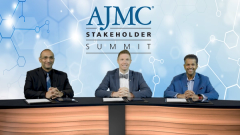
Overview of Dry Eye Disease (DED) Causes and Treatments
Jai G. Parekh, MD, MBA; and Alexander Kabiri, OD; explore the current treatment landscape of dry eye disease.
Episodes in this series

This is a video synopsis/summary of a Stakeholder Summit involving:
Ryan Haumschild, PharmD, MS, MBA; Jai G. Parekh, MD, MBA; and Alexander Kabiri, OD.
Kabiri provides an overview of the main dry eye disease (DED) subtypes: evaporative DED due to meibomian gland dysfunction, aqueous-deficient DED with insufficient aqueous volume, and mixed DED with overlap between the two. He notes most DED involves an evaporative component.
Parekh discusses traditional DED treatments like over-the-counter artificial tears, immunomodulators, and some steroids. Many patients try over-the-counter options before seeing an eye care professional. Recent issues with unbranded artificial tears have further demonstrated the need for branded options as a first line. However, immunomodulators mainly address inflammation, not the evaporative component that underlies most DED. Previous lack of treatments for evaporative DED represents an unmet need. Parekh reports average prescription duration of only 6 to 8 months due to issues like nonresponse, adverse effects, noncompliance, and cost. Finally, Parekh notes emerging focus on meibomian gland disease, a main cause of evaporative DED, with new pharmacotherapies in 2023 offering an opportunity to better address this significant component of DED.
Video synopsis is AI-generated and reviewed by AJMCÒ editorial staff.
Newsletter
Stay ahead of policy, cost, and value—subscribe to AJMC for expert insights at the intersection of clinical care and health economics.







































